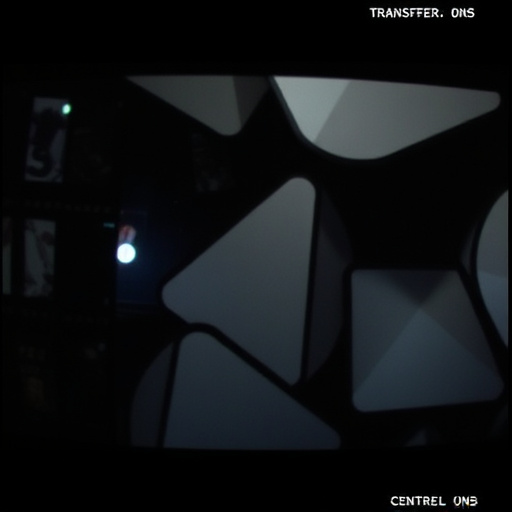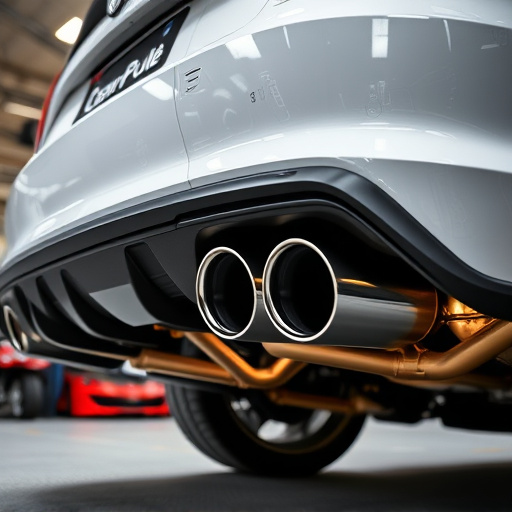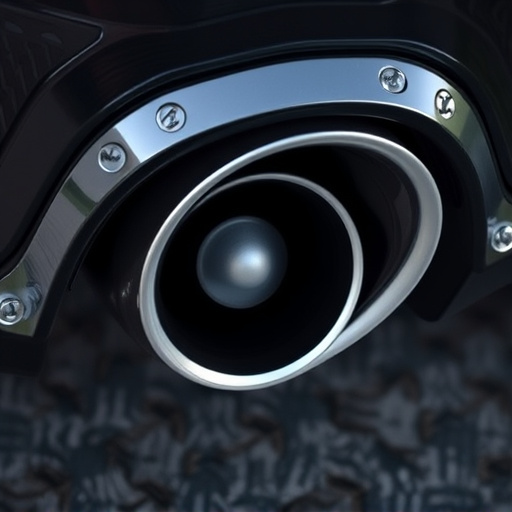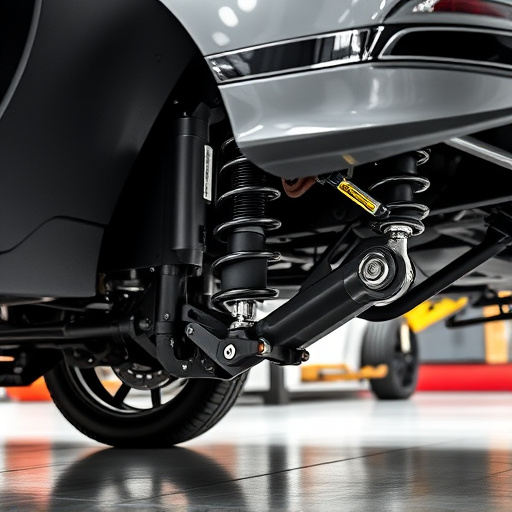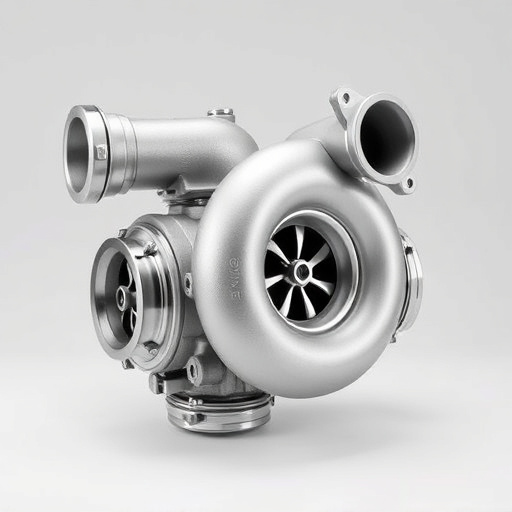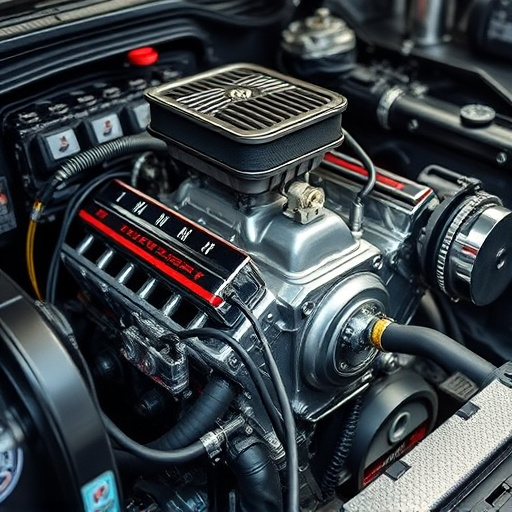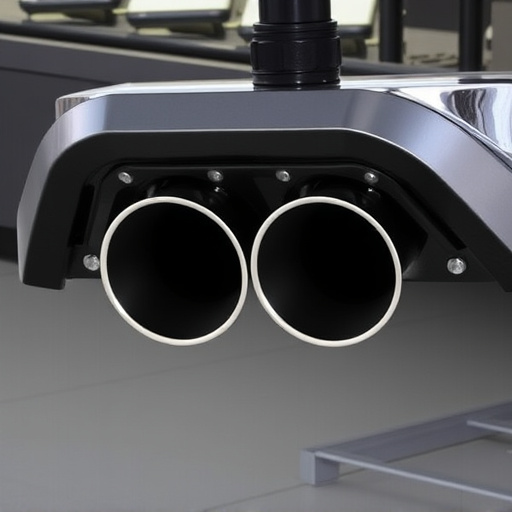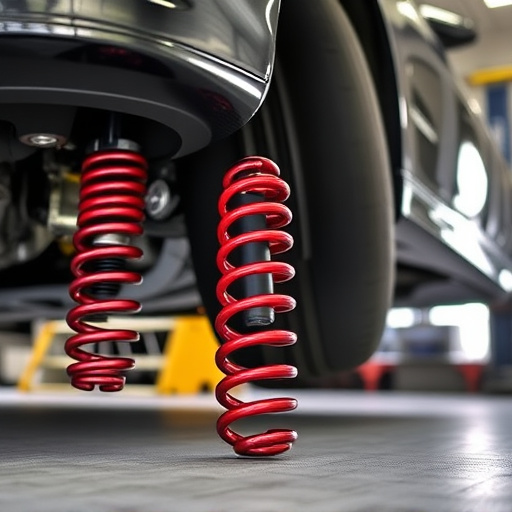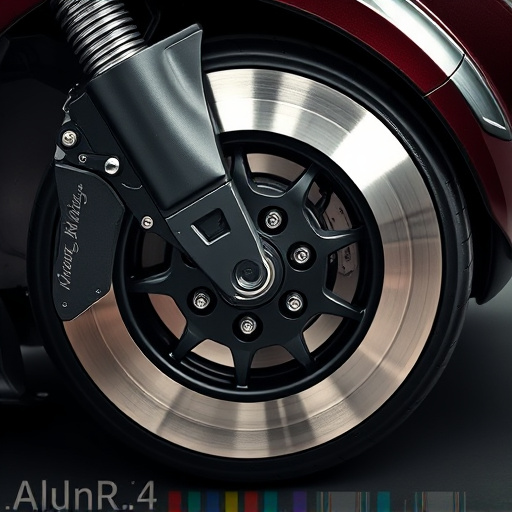A resonator delete is a popular initial step in exhaust upgrades for vehicles, enhancing engine sound, horsepower, and acceleration by removing noise-reducing components. It's budget-friendly and easy to do but may increase noise levels. Further optimizations with performance air filters and suspension kits can lead to significant performance improvements.
Is your vehicle’s exhaust system letting you down? Many performance enthusiasts are turning to a simple yet effective first step in their exhaust upgrades: the resonator delete. This cost-effective modification rids your car of unnecessary backpressure, enhancing power and sound. But is it the right move for every driver? In this article, we’ll explore ‘resonator delete’—its basics, advantages, and potential drawbacks—and open up a world of exhaust upgrade possibilities beyond this initial step.
- Understanding Resonator Delete: The Basic Concept
- Benefits and Drawbacks of Starting With Resonator Delete
- Exploring Other Exhaust Upgrade Options Beyond Resonator Delete
Understanding Resonator Delete: The Basic Concept

A resonator delete is a modification often considered as a first step in exhaust upgrades for vehicles. The basic concept involves removing or blocking the resonator, a component in the vehicle’s exhaust system designed to reduce unwanted sound frequencies. By eliminating this part, enthusiasts aim to enhance the engine’s exhaust note, creating a deeper, more aggressive sound that many car owners find appealing. This simple modification is particularly popular among those seeking an affordable and relatively easy way to improve their vehicle’s performance and aesthetics, especially in modified cars or high-performance models.
This process is often accompanied by the installation of performance air filters and performance exhaust systems, which further contribute to enhanced engine output and a more distinctive sound. While a resonator delete can be done relatively cheaply and with minimal effort, it’s important to note that it may also increase noise levels significantly, requiring additional adjustments like adding a new muffler tip for better control over exhaust noise.
Benefits and Drawbacks of Starting With Resonator Delete

Resonator delete is a popular first step when upgrading an exhaust system, offering several benefits for car enthusiasts seeking better performance and sound. By removing the resonator, drivers can expect enhanced engine sound and increased horsepower due to reduced backpressure. This modification allows for freer-flowing exhaust gases, which can lead to improved acceleration and a more responsive driving experience. It’s also relatively affordable and straightforward to install, making it an accessible option for DIY enthusiasts.
However, there are potential drawbacks to starting with a resonator delete. Removing the resonator may result in an louder, more aggressive exhaust note that might be disturbing to some drivers or neighbors. Additionally, while it provides performance gains, it’s not a comprehensive solution for achieving optimal exhaust upgrades. Other components like muffler tips, performance air filters, and suspension kits can still be optimized for further enhancements.
Exploring Other Exhaust Upgrade Options Beyond Resonator Delete

While many enthusiasts consider a resonator delete the first step in exhaust upgrades, there’s a world of other high-performance parts waiting to be explored. Beyond simply removing the resonator, upgrading your exhaust system involves a variety of components designed to enhance performance and sound. Consider performance air filters for increased airflow, allowing your engine to breathe more efficiently. For those looking to take things further, suspension kits can complement exhaust upgrades by optimizing vehicle handling and driving dynamics.
By focusing only on the resonator delete, you might be missing out on the synergistic effects of a complete system upgrade. Combining these modifications with other performance-oriented parts can lead to noticeable gains in horsepower, torque, and overall drivability, transforming your vehicle into a true force on the road.
Resonator delete is a popular first step in exhaust upgrades, offering significant benefits like improved sound and performance. However, it’s not without drawbacks, such as potential power loss. Before settling on this as your primary upgrade, consider other options like high-flow catalysts or mid-pipe reductions for a more well-rounded improvement. Ultimately, the best approach depends on individual preferences and driving needs.
